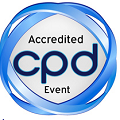Claudia Gallert
University of Applied Science Emden Leer, Germany
Title: Multiresistant bacteria in aqueous environment
Biography
Biography: Claudia Gallert
Abstract
The discovery and use of antibiotics is one of the major scientific achievements of the last century which helped to improve human and animal health by treating infectious diseases. The increased use of these naturally synthesized and sometimes chemically modified antibiotics to treat infections of humans and animals by microorganisms results in excretion of the mother compound or of biotransformed metabolites with urine or feces and release into the aqueous environment. Besides pollution of all ecosystems, antibiotics or their transformation products can also create or induce different resistant types in microorganisms against which they should be active. This ambivalent mode of action causes increasing antibiotic resistance and is one of the major threats for human health in the 21st century. The rapid appearance of drug-resistant bacteria upon antibiotic exposure implies that resistance and resistance mechanisms have co-evolved with application of the drugs. The transfer of antibiotic resistance can occur either by antibiotic resistant bacteria (ARB) or by antibiotic resistance genes (ARGs). Elements that favor moving of genes within and between genomes include plasmids, transposons, integrons, insertion sequences and integrative conjugative elements. These elements and the genes they carry are designated as “Mobilomes”. They are called “Resistomes” when they carry antibiotic resistant genes. There are two ways of acquisition of antibiotic resistance: vertical evolution via mutation and selection or horizontal evolution via exchange of genes between strains and different species via transformation (uptake of "naked" DNA), conjugation (exchange of plasmids or transposons) or transduction (bacteriophage as DNA shuttles). In literature four main “genetic reactors” in which antibiotic resistance evolves were identified: a) human and animal microbiota, b) hospitals, long-term care facilities and animal farms, or any other place in which susceptible individuals are crowded and exposed to microbial contact, c) wastewater and any type of biological residues and d) the soil and the surface or ground water environments, where the bacterial organisms originated in the previous reactors, mix and counteract with environmental organisms. From this point of view it is no wonder that ARGs are nowadays considered as “emerging contaminants” or as xenogenetic pollutants, but with the critical distinction that they replicate rather than degrade when they are released and pollutes natural environments.

